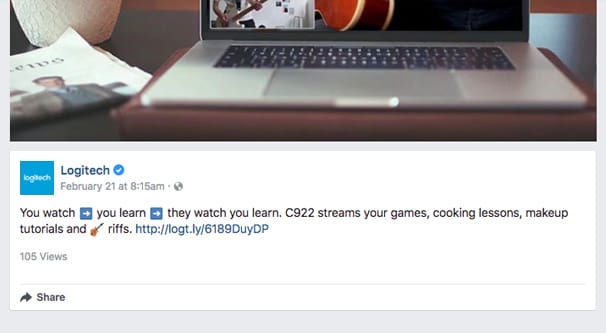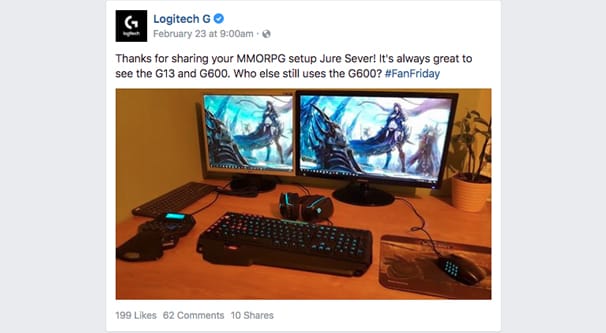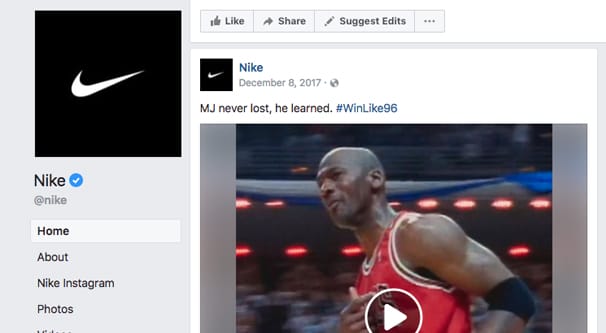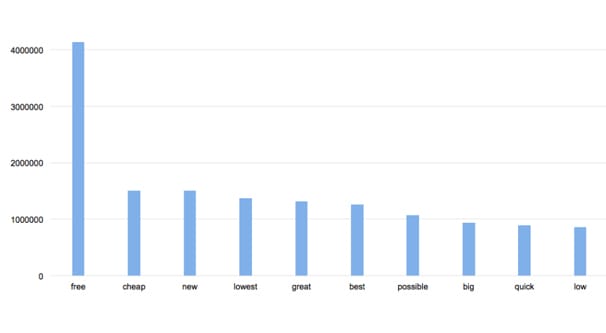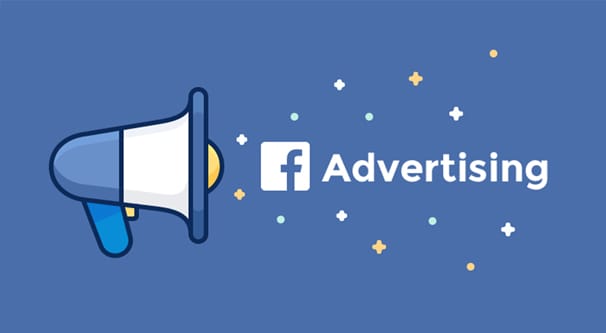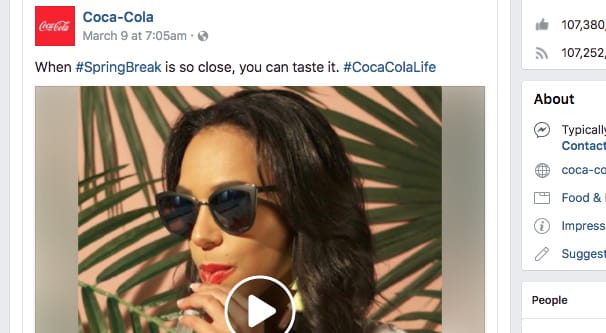 Written by ContentPowered.com
Written by ContentPowered.com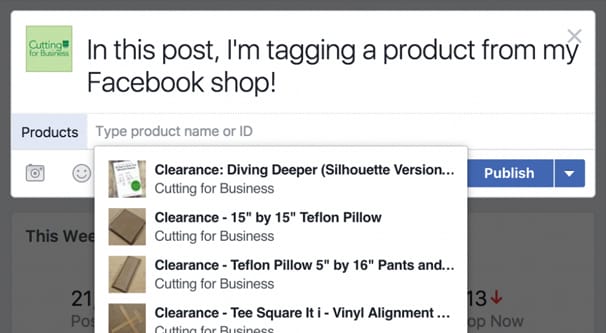
When marketers talk about advice to improve post reach, one of the most common pieces of advice is to be less commercial or less advertorial. At this point, I tend to take it for granted that everyone knows what I mean, but that’s not always the case. So what do I mean by advertorial, and why does Facebook hate it?
Commercial or Advertorial Posts
First of all, let’s define what is considered a commercial or advertorial post. At first glance, it seems like a pretty simple definition. Anything that focuses outright on selling your product or service is an advertorial post.
Here’s an example. This post by Logitech has a lot going for it. It uses emojis, it’s short, it’s a video; all of which help make a post more attractive. Logitech’s page here has almost three million followers. Yet that post has one single like, zero comments, and only 105 views. By any metric at all, that’s utterly abysmal.
So why is it so bad? There are a few reasons. First, there’s nothing to really engage with on the post itself. If you don’t watch the video, all you have is some call to action about streaming media, specifically using their webcam, as promoted on that post. It’s too commercial with too little benefit to the reader or viewer of the video.
Compare that to this post. This one is just a photo, which has less weight with Facebook. It’s on a spinoff Logitech page, which has under two million followers. It doesn’t use emojis, but it does use a hashtag.
It has 200 likes, 9 shares, and dozens of comments.
Why is one post more successful than the other? Two factors. The first is that it’s not advertising a product, it’s just showcasing a product in use by a fan. The second is that it includes a question fans of the brand will be compelled to answer.
Now take a look at this page. The Facebook page for Nike, you might think, would be full of apparel, products they want to sell, and so forth. Scroll down it and tell me when you find one.
Found one yet? I scroll through and I see posts about a celebrity athlete they have a deal with, posts about the sports lifestyle, posts about getting involved with their social movement, and so on.
Nike only posts a few times each month, but their posts are generally more about the lifestyle they try to encourage. They’re a huge brand and don’t need to build awareness or sell products. What they need is to build an image, and that’s what they do. They post a lot of videos that showcase Nike products, but they showcase products in action, incidental to the narrative of the post. They aren’t saying “buy Nike if you want to be good at sports.” They’re saying “People who are good at sports tend to use Nike products.”
Of course, a large brand like Nike has divisive practices and a long history of making some people mad, so there are a lot of comments on posts that involve ex-fans being angry and trying to call out the brand. Here’s the secret, though; those posts are still engagement. Nike doesn’t care, because the people engaging with their brand are still promoting it, even if they don’t intend to.
Facebook’s Algorithms
We’ve often written about Facebook’s algorithm, Edgerank, and how it affects how well you’re able to promote posts organically. Mostly, I just talk about how recent the post is, what type of post it is, and past engagements. There’s a bit more to the story, though.
Reach brings in engagement, and engagement increases reach. Brands that get a lot of one can snowball into the other, and keep the ball rolling as they grow. Brands that have trouble getting one or the other will have a hard time building momentum on the site.
The question is, how does Facebook figure out when a post is too advertorial to be given circulation? Obviously they can figure it out somehow.
It’s not sensible to think that your audience is reporting your posts. No one reports posts that often, and reports are generally saved for the truly offensive content. Sure, sometimes you might piss off one person who chain-reports everything you post, but Facebook will quickly learn to disregard them. With the trillions upon trillions of posts being made every picosecond on the site – or so it feels sometimes – it’s clear there’s no human oversight. Oh, sure, they do spot-checks to audit posts that come up and double-check the algorithms, but 99% of the work is just that; algorithms.
The answer lies in a combination of machine learning, persistent penalties, and trigger words.
We all know Facebook is digging into various machine learning and AI-building endeavors. Some are independent, but many are aimed at making Facebook a sculpted social experience. The algorithm adapts as more information is fed to it, and those adaptations make it more proficient at picking out the right kinds of content for a given audience.
Persistent penalties come into play once a brand messes up a few too many times. When their posts are reported, when they’re too promotional, and when they simply fail to engage their audience, they end up with less and less reach. It’s a feedback loop, a downward spiral; the less people want to engage with your posts, the fewer opportunities Facebook is going to give them. After all, there’s no shortage of content to share.
And then there are the trigger words. Trigger words are the foundation of the algorithm. Facebook doesn’t admit that they’re in use, but they clearly are, and it’s no surprise. Think about it like keywords for web search. Your content is broken down into words that are relevant to the content as a whole, and then anyone searching for those words will find your content.
Trigger words for Facebook work a little bit like that in reverse. There are a list of words that Facebook has flagged as “commercial” or “promotional” and, consequently, devalues in the algorithm. Posts using those words will, by default, get less reach. Facebook shows them to fewer people, which in turn means fewer people engage with the page, which means fewer people see future posts. Thus it cycles to a minimum level, at which point the page owner either needs to change or just stagnates.
What sort of words are trigger words? As you might expect, they tend to be promotional or commercial in nature. Words like App, Buy, Deal, Discount, Install, Promotion, and Shop are all potential trigger words.
It’s not as simple as just using them, of course. A page could post something like “If we were to make an app, what features would you like to see?” It wouldn’t be demoted in the algorithm, because it’s contextually fine. It’s not promotional itself. That’s where the machine learning comes into play. Facebook feeds a list of trigger words into their machine, which starts to figure out the context of those words. Some contexts are fine, others are promotional, and the algorithm figures out which are which. Human spot-checking refines the algorithm and helps set it back on track when it flags the wrong kinds of posts.
Why Facebook Cares
So the question is, why does Facebook care about any of this? Why not just let brands go hog wild? Wouldn’t social pressure eventually make them adapt in the right ways? Well, not really.
The risk of allowing unfettered commercial posting is two-fold. First and foremost, it works. When there’s no algorithm holding the posts back, people tend to engage with them just enough to keep them alive, and they tend to convert enough that the business feels it’s a viable strategy. They keep doing it, and it keeps getting worse.
Eventually, you end up with a Facebook that is virtually nothing but brand posts pushing their products. One of two things happens, then. Either people stop following the brands and keep their friends lists limited to people they want to see, or people leave the platform for one that feels less like a 24/7 commercial break. The world is already saturated with advertising, after all. You can’t listen to the radio without ads. You can’t watch TV without ads. You can’t drive down the highway without seeing ads. You can’t read a magazine without flipping past dozens of them. The web is covered with them. Social media, sites meant to help you connect with friends and family, would end up just as bad if not worse.
Even that, Facebook wouldn’t care about, if not for one little fact; they want to make money. They need to make money, if they want to keep the site alive. You can’t imagine how much it costs to keep a site like Facebook alive; they basically own their own data centers at this point. They’re paying for immense amounts of bandwidth, the technology to keep the site alive and available globally 24/7, and all of the staff needed to police, enforce, and develop for the site.
How does Facebook make money? Well, ignoring the part where they harvest astonishing amounts of personal information and sell it to the highest bidders, they sell ads. Advertising space is a premium commodity.
If Facebook left commercial posts to be completely unfettered, there would be no incentive for anyone to buy ads, at least not right away. Eventually it would end up looking like one of those old website toplists. The “top 100” sites in a given category, except the top rated site is actually number 49, because the top 48 of them are people paying for the position, with #1 going to the one who paid the most.
Ads are designed to be the way businesses can post commercial and sales-focused content without being hampered by the algorithm. You pay money for the privilege, and you might have to pay more depending on how premium the audience you’re trying to reach happens to be. Money allows you to circumvent the need to care about the algorithm.
What To Do Instead
It’s easy to get tunnel vision with the web, especially if you’re not used to the way communication has evolved in the last decade. We as business owners and marketers tend to look at every means of communication and ask “how can I use this for advertising?”
With Facebook, we need to take a different approach. Rather than try to figure out how to commercialize content on the feed, we need to recognize that Facebook is not a suitable venue for commercialized posting, at least not without the money to back it. Instead, we need to realize that Facebook is about building brand image, familiarity, recognition, and relationships. Social media is much better for awareness and networking than it is for marketing. Paying for ads is, in many cases, even incidental to success on the platform. It’s a fringe benefit, not a core feature.
There are a lot of posts about how to boost reach by using Facebook casually, but it’s fairly easy to sum up as well. Basically, focus your organic posts on the lifestyle and image you want to express. Nike is focused on athletics. Logitech Gaming is focusing on the tech and gaming lifestyle. You can focus on the kind of atmosphere you want to project to your users; in a “this is what you can achieve” sort of way.
As for boosting engagement, make your posts encourage it. Don’t tell people to share or comment; ask them a question that begs an answer. Encourage sharing personal experiences with your products or even just in the lifestyle you’re tapping. Share items of value to your potential and actual users.
With careful use, you can start that snowball in a positive direction. All it takes is a bit of a shift in perspective.
